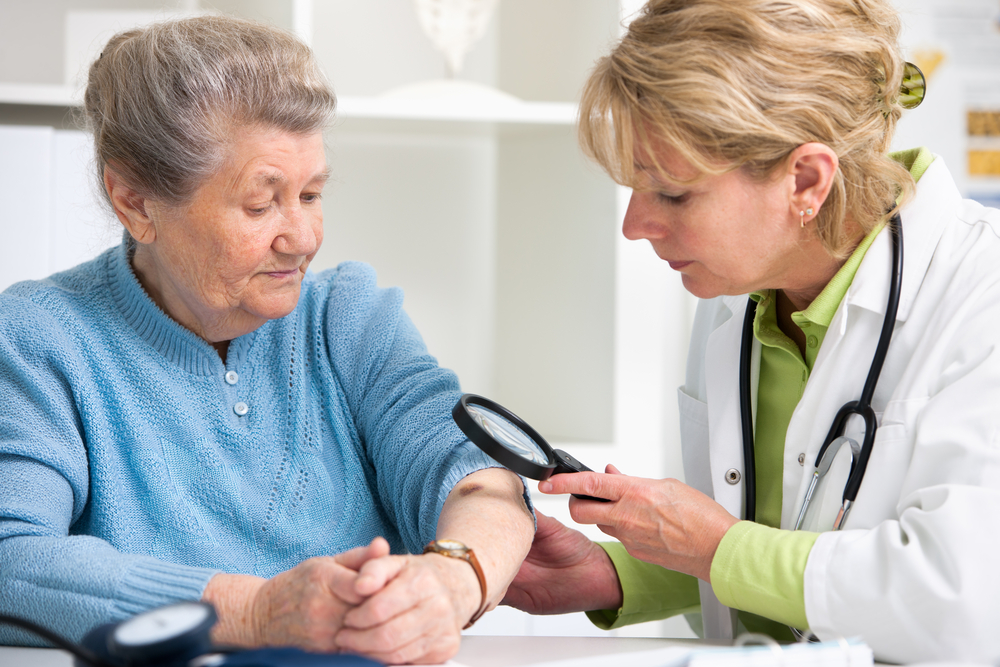Faqs On Skin Cancer Diagnosis
Cancer is a complex disease, but understanding how it develops is important as the condition affects vital body parts, like the lungs, heart, blood, liver, and, of course, skin. Skin cancer is among the most common cancers in the country. While exposure to UV radiation is a common risk factor, other factors like genetics can increase the risk of skin cancer. To understand the condition and its causes better, consulting a doctor is crucial.

How to know if one is at risk for skin cancer?
- This is the first question most people want to be answered. Spending time in the sun with no protection and having low melanin in the skin means being at risk of developing skin cancer.
- Further, people with hazel or blue eyes/blonde or red hair are at a higher risk. For people living near the equator, this problem could be worse.
- Exposure to unnaturally high levels of radiation to chemicals that are known to be cancerous is a work hazard for many people.
- A suppressed immune response or any STDs means a higher risk of developing skin cancer.
- The elderly are also more predisposed to cancer than others.
How is skin cancer diagnosis conducted?
- If someone is at risk for skin cancer, the best thing to do is to approach a doctor with the concerns. The information provided here does not substitute for medical advice.
- Cancer is known for creeping up on people. Many people end up getting their diagnosis during the third or final stage of the disease, when treatment has to be vigorous and chances for survival are bleak. Skin cancer is different. One look through a skin cancer photo gallery shows that the disease leaves behind marks.
- Signs and symptoms are the first things to watch out for. The doctor can do two things in order to secure a skin cancer diagnosis. The first thing is looking at the skin and examining it closely. This can be done by people at home also, if they feel that they’re at risk of skin cancer. Skin changes in many ways with the onset of cancer.
- If concerning signs are found, the doctor may take samples of the skin for analysis. A skin biopsy helps understand whether there is cancer, and if so—what kind of cancer it is.
How can a self-diagnosis of skin cancer be performed?
- A look at some pictures of skin cancer will give a rough idea of what to watch out for. Fair warning—it isn’t pretty. The good thing is that even before approaching the doctor for a diagnosis, the skin will mostly show visible and easy-to-pick-up signs of skin cancer.
- When conducting a self-check, ensuring that every inch of the body is covered is important, as skin cancer can pop up anywhere. Also, if the result is inconclusive, it’s important to visit a doctor soon to get any doubt cleared.
How can the different skin cancer types be recognized in a self-diagnosis?
There are three kinds of skin signs to be watched out for: Melanoma, Basal Cell Carcinoma, and Squamous Cell Carcinoma:
- Melanoma is the deadliest of them all. This spreads the fastest and should not be left untreated. This might be a new spot that has not been seen or an existing spot that increases in size. The Nodular Melanoma is darker and often colored. They bleed and crust eventually and are in a dome shape. This kind of cancer, however, is fairly rare.
- Basal Cell Carcinoma is the most common and least dangerous. Often dry and scaly to the touch, it develops in areas most exposed to the sun and is often red or pale.
- Squamous Cell Carcinoma is a red and scaly spot. This type of cancer affects those above the age of 50. These spots bleed and crust and develop slowly over months.
Photos of skin cancer can be referred to for a better understanding of the differences and for help with the diagnosis.
These signs are best examined by a professional, so in case of unusual skin conditions, it is best to approach a doctor.



